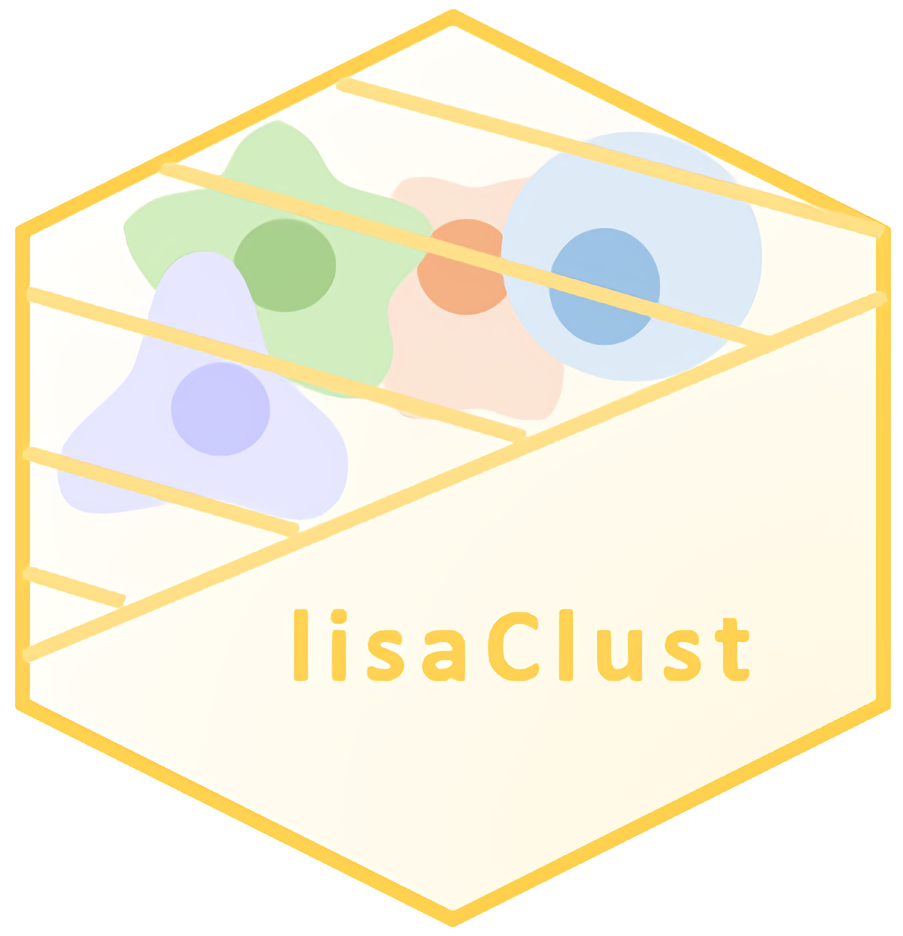Clustering of Local Indicators of Spatial Association
lisaClust provides a series of functions to identify and visualise regions of tissue where spatial associations between cell-types is similar. This package can be used to provide a high-level summary of cell-type colocalisation in multiplexed imaging data that has been segmented at a single-cell resolution.
For the Bioconductor release version, run the following.
if (!require("BiocManager", quietly = TRUE))
install.packages("BiocManager")
BiocManager::install("lisaClust")If you would like the most up-to-date features, install the most recent development version.
# Install the development version from Bioconductor:
if (!require("BiocManager", quietly = TRUE))
install.packages("BiocManager")
# The following initializes usage of Bioc devel
# This will update all your Bioconductor packages to devel version
BiocManager::install(version='devel')
BiocManager::install("lisaClust")
# Otherwise install the development version from GitHub:
# install.packages("devtools")
devtools::install_github("ellispatrick/lisaClust")
library(lisaClust)listClust is still under active development. We would greatly appreciate any and
all feedback related to the package.
- R package related issues should be raised here.
- For general questions and feedback, please contact us directly via [email protected].
- Nicolas Canete
- Ellis Patrick - @TheEllisPatrick
Patrick, E, Canete, NP, Iyengar, SS, Harman, AN, Sutherland, GT, Yang, P. Spatial analysis for highly multiplexed imaging data to identify tissue microenvironments. Cytometry. 2023. https://doi.org/10.1002/cyto.a.24729

